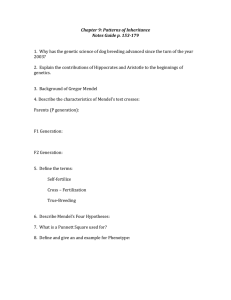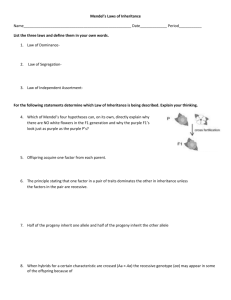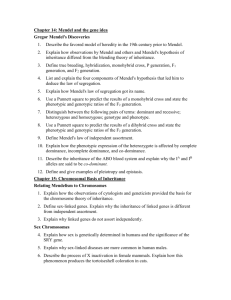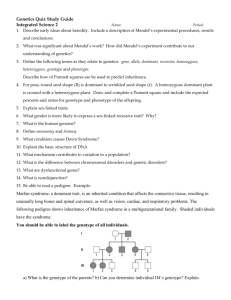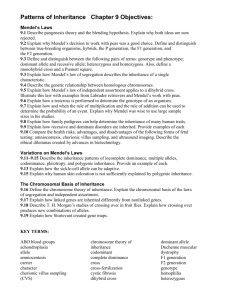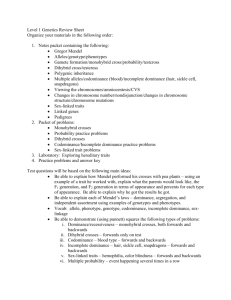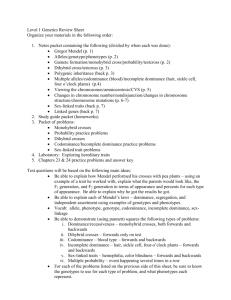Study guide - Chapter 09
advertisement
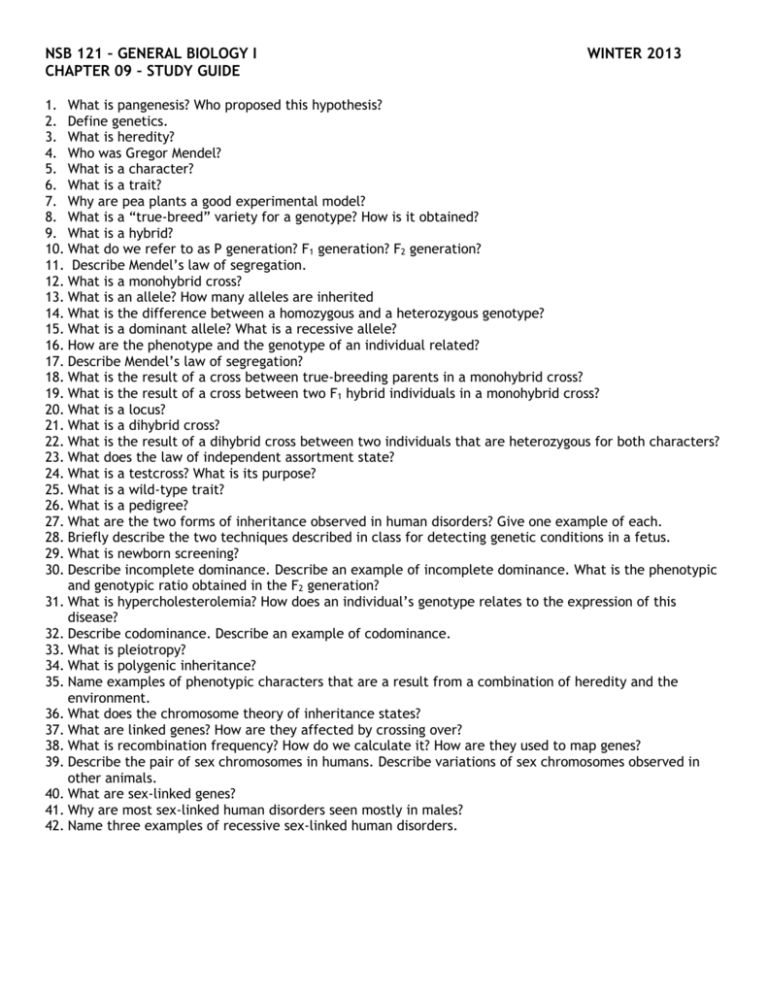
NSB 121 – GENERAL BIOLOGY I CHAPTER 09 – STUDY GUIDE WINTER 2013 1. What is pangenesis? Who proposed this hypothesis? 2. Define genetics. 3. What is heredity? 4. Who was Gregor Mendel? 5. What is a character? 6. What is a trait? 7. Why are pea plants a good experimental model? 8. What is a “true-breed” variety for a genotype? How is it obtained? 9. What is a hybrid? 10. What do we refer to as P generation? F1 generation? F2 generation? 11. Describe Mendel’s law of segregation. 12. What is a monohybrid cross? 13. What is an allele? How many alleles are inherited 14. What is the difference between a homozygous and a heterozygous genotype? 15. What is a dominant allele? What is a recessive allele? 16. How are the phenotype and the genotype of an individual related? 17. Describe Mendel’s law of segregation? 18. What is the result of a cross between true-breeding parents in a monohybrid cross? 19. What is the result of a cross between two F1 hybrid individuals in a monohybrid cross? 20. What is a locus? 21. What is a dihybrid cross? 22. What is the result of a dihybrid cross between two individuals that are heterozygous for both characters? 23. What does the law of independent assortment state? 24. What is a testcross? What is its purpose? 25. What is a wild-type trait? 26. What is a pedigree? 27. What are the two forms of inheritance observed in human disorders? Give one example of each. 28. Briefly describe the two techniques described in class for detecting genetic conditions in a fetus. 29. What is newborn screening? 30. Describe incomplete dominance. Describe an example of incomplete dominance. What is the phenotypic and genotypic ratio obtained in the F2 generation? 31. What is hypercholesterolemia? How does an individual’s genotype relates to the expression of this disease? 32. Describe codominance. Describe an example of codominance. 33. What is pleiotropy? 34. What is polygenic inheritance? 35. Name examples of phenotypic characters that are a result from a combination of heredity and the environment. 36. What does the chromosome theory of inheritance states? 37. What are linked genes? How are they affected by crossing over? 38. What is recombination frequency? How do we calculate it? How are they used to map genes? 39. Describe the pair of sex chromosomes in humans. Describe variations of sex chromosomes observed in other animals. 40. What are sex-linked genes? 41. Why are most sex-linked human disorders seen mostly in males? 42. Name three examples of recessive sex-linked human disorders.



